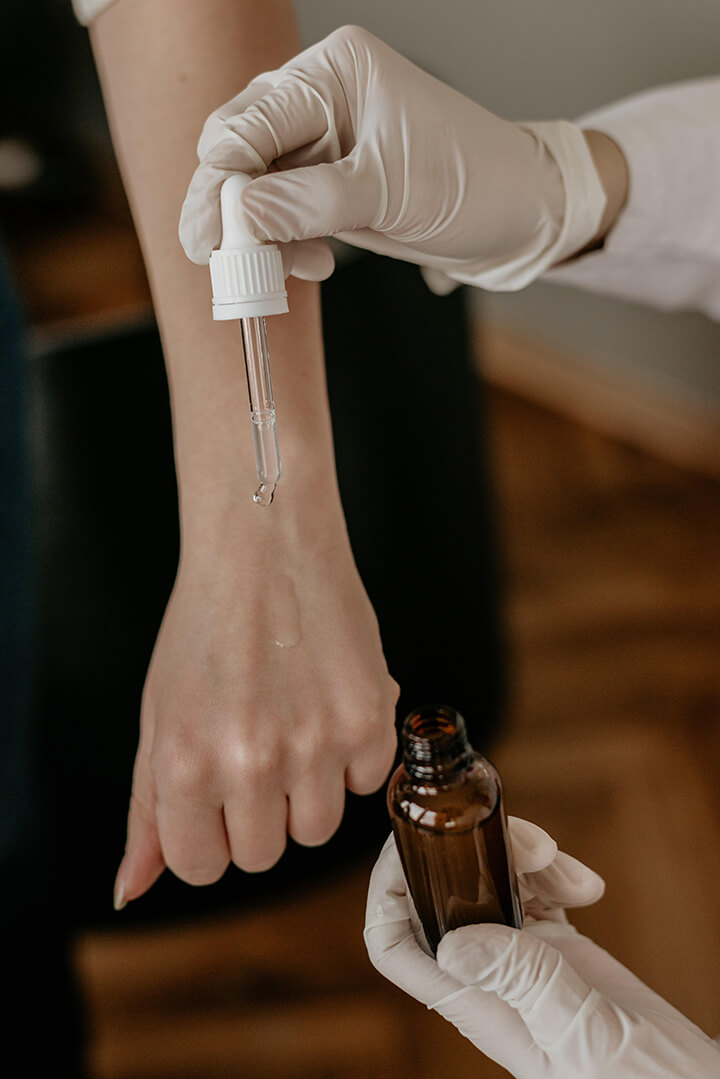Skin issues can potentially plague you from the beginning of your life to the end.
Just shortly after starting your life, you may suffer with an uncomfortable diaper rash. In your teens, your skin may break out with embarrassing acne. When you reach menopause, your skin thins and can become dry inside-and- out, which can cause irritations and pain, and even interfere with your sexual intimacy.
Relief for all of these skin problems, as well as many more may be as close as your garden. Research shows the flower of a marigold—Calendula officinalis—contains an array of medicinal properties, which can be helpful for many different health conditions. It has been found to be especially soothing to your skin, both inside and outside.

“[Calendula officinalis] has been found to be especially soothing to your skin, both inside and outside.”
An Ancient Flower For Modern Times
Calendula officinalis belongs to the Asterceae family, which also includes daisies. It is native to Mediterranean countries, but has a long history of cultivation all over the world. The pale yellow to orange-red flowers are edible, and chefs use them to add color to salads or as a substitute for saffron. Ancient Greek, Roman, and East Indian cultures dating back at least to the 12th century used the flowers of Calendula to treat a variety of ailments. For example, internally it was used for stomach upsets, muscle spasms, menstrual cramps and sore throats; and externally was used for cuts, wounds and various skin conditions. During the American Civil War and World War II,Calendula flowers were applied to wounds to stop bleeding, prevent infections, and speed healing. Over 350 studies in the medical literature to date confirm that the flower of this marigold has an impressive power to heal.
What’s Inside That Holds The Magic?
The petals of Calendula officinalis contain many different active molecules such as triterpenoid esters and several carotenoids, including flavoxanthin and auroxanthin—responsible for its yellow-orange color—as well as lutein, zeaxanthine and betacarotene. They also have saponins, resins and essential oils.
Studies show that these substances demonstrate an array of medicinal properties including:
- Anti-inflammatory
- Antioxidant
- Antibacterial
- Antifungal
- Anticancer
Flower Power for Your Skin
Hundreds of studies in the medical literature confirm much of what the ancients knew about the healing power of the flower of Calendula. They also reveal other conditions, especially of your skin, for which this marigold can provide welcome relief. They include:
Diaper rash: In a randomized double-blind study published in 2012, either aloe vera or Calendula was applied to the skin of 66 infants with diaper rash. After 10 days, improvements were seen in both treatments groups; however, the infants treated with Calendula had significantly fewer rashes.1
Acne: A 2001 study found that because Calendula has profound anti-inflammatory and anti-bacterial effects, it is beneficial for acne.2
Sunburns: In an assessment published in 2012 of the sun protection factors of the essential oil of Calendula officinalis, researchers found it demonstrated an SPF of 15.3
Radiation burns: A phase III randomized, single-blinded trial was conducted in 2009 comparing calendula to the drug Tolamine for prevention of acute dermatitis caused by radiation treatments for breast cancer. Half of the women were treated with trolamine and the other half were treated with a petroleum jelly ointment containing 20 percent calendula—which were applied on the irradiated areas after each session. The occurrence of acute dermatitis was significantly lower in the Calendula group compared to Trolamine (41 percent versus 63 percent). In addition, the patients using calendula also had a significant reduction in radiation-induced pain.4
Wound healing: Calendula has been shown to help wounds heal faster in a number of ways.4,5,6,7 It decreases inflammation and bacteria that can interfere with wound healing; and also increases blood flow and oxygen to wounds, which can help your body grow new tissues.5Studies show that Calendula can be particularly helpful for burn wounds and leg ulcers. For instance, a study of 7.5 percent Calendula ointment applied to venous leg ulcers found a significant acceleration of wound healing compared to those treated with saline dressings.4,6
Skin aging: A 2011 study documented that topically applied Calendula can delay aging of the skin by improving its elasticity, hydration and firmness.8

“Hundreds of studies in the medical literature confirm much of what the ancients knew about the healing power of the flower of Calendula.
They also reveal other conditions, especially of your skin, for which this marigold can provide welcome relief.”
Bacterial vaginosis and vaginal yeast infections
The researchers compared the use of calendula ointment with Metronidazole (a drug commonly used to treat bacterial vaginosis) in 80 women who had been diagnosed with bacterial vaginosis. They found that after a week of the procedure, both groups of women were cured of their bacterial vaginosis and neither suffered from side effects. They concluded that for women who wish to avoid taking medication to treat bacterial vaginosis, calendula ointment may be a viable option. As for its effectiveness in treating yeast infections, a study published in Women and Health found that calendula cream was effective in treating vaginal yeast infections, but had a delayed effect compared to standard medications (Clotrimazole) .
References
- Yunes Panahi, Mohamad Reza Sharif, et al. “A Randomized Comparative Trial on the Therapeutic Efficacy of Topical Aloe vera and Calendula officinalison Diaper Dermatitis in Children.” Scientific World Journal. 2012; 2012: 810234. Published online 2012 Apr 19. doi: 10.1100/2012/810234.
- Mishra Priyanka et al. “Treatment of Acne with Herbal Remedie –Calendula officinalis: An Overview.” International Journal of Pharmaceutical & Biological Archives 2011;2(4):1020–3.
- Mishra A, Mishra A, Chattopadhyay P., “Assessment of In vitro Sun Protection Factor of Calendula officinalis L. (Asteraceae) Essential Oil Formulation.” J Young Pharm. 2012 Jan;4(1):17-21. doi: 10.4103/0975-1483.93575.
- Arora D, Rani A, Sharma A. “A review on phytochemistry and ethnopharmacological aspects of genus Calendula.” Pharmacogn Rev. 2013 Jul;7(14):179-87. doi: 10.4103/0973-7847.120520.
- Patrick KF1, Kumar S, Edwardson PA, Hutchinson JJ. “Induction of vascularisation by an aqueous extract of the flowers of Calendula officinalis L. the European marigold.” Phytomedicine. 1996 May;3(1):11-8. doi: 10.1016/S0944-7113(96)80004-3.
- Parente LM, Lino Júnior Rde S, et al. “Wound Healing and Anti-Inflammatory Effect in Animal Models of Calendula officinalis L. Growing in Brazil.” Evid Based Complement Alternat Med.2012;2012:375671. doi: 10.1155/2012/375671. Epub 2012 Jan 24.
- Preethi KC, Kuttan R. “Wound healing activity of flower extract of Calendula officinalis.” J Basic Clin Physiol Pharmacol. 2009;20(1):73–9.
- Akhtar N, Zaman SU, Khan BA, Amir MN, Ebrahimzadeh MA.” Calendula extract: effects on mechanical parameters of human skin.” Acta Pol Pharm. 2011 Sep-Oct;68(5):693-701.
